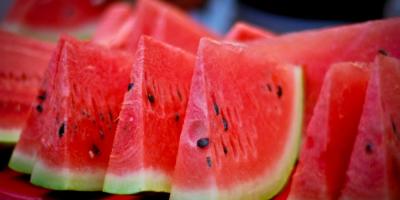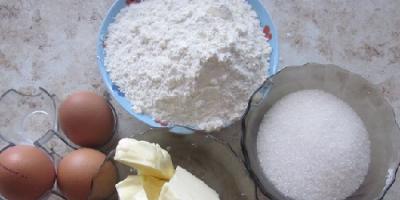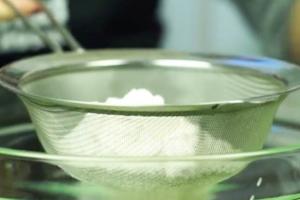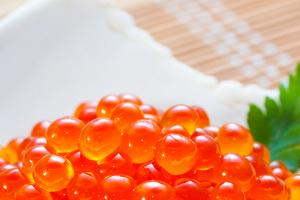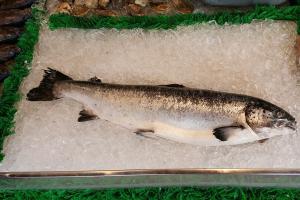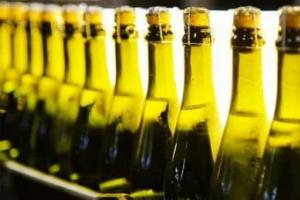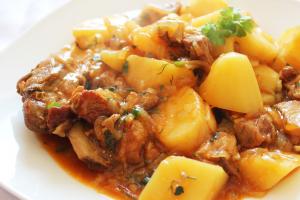Food prices in Bolivia are quite low even by Latin American standards. The average bill in an inexpensive Bolivian cafe is approximately 15-20 bolivianos (65-90 rubles) per person; a good lunch or dinner for two in a mid-range restaurant will cost about 50-100 bolivianos (215-430 rubles). You can get a combined lunch at a local McDonald's for 25-30 bolivianos (110-135 rubles).
Information about the cost of food in Bolivian stores can be found in the article Prices in Bolivia.
Bolivian cuisine consists mainly of meat and potatoes. The main method of cooking all types of meat and chicken is roasting (chicharron). In rural areas, they eat guinea pigs and rabbits (their meat is sometimes offered in city restaurants). Served as condiment spicy sauce llajhua.
Traditional Bolivian dishes include Pique a lo macho(fried pieces of meat with spicy sauce from tomatoes, onions and potatoes), Silpancho(a piece of beef on a pillow of rice and potatoes, with fried egg above).
 Among the snacks sold by street vendors are Anticucho(beef skewers served with potatoes and corn sauce), Salchipapa(thinly sliced sausage with fried potatoes), Choripan(sandwich of spicy sausage cirozo with fried onions and lots of sauce) Saltena(baked buns with meat, potatoes and sauce).
Among the snacks sold by street vendors are Anticucho(beef skewers served with potatoes and corn sauce), Salchipapa(thinly sliced sausage with fried potatoes), Choripan(sandwich of spicy sausage cirozo with fried onions and lots of sauce) Saltena(baked buns with meat, potatoes and sauce).
Dessert is often served Ensalada de Frutas(cutting various fruits with yogurt; sometimes honey, nuts or gelatin are added).
Drinks in Bolivia
Traditional alcoholic drinks in Bolivia - chicha(chicha, a whitish sour drink made from grain), and Singani(grape drink). Several types of beer are brewed in the country (for example, Pacena). Local beer often has a sweetish aftertaste; its price averages 7-10 bolivianos (30-45 rubles) per bottle.
From without alcoholic beverages drinking in Bolivia Licuado(water or milk mixed with some combination of fruit), Mocochinchi(drink of peaches and spices), api(drink made from corn).
Tipping in Bolivia
In restaurants, it is customary to leave a tip in the amount of 5-10% of the order value. In upscale establishments, as a rule, the service charge is included in the bill automatically. Small tips are also given to hotel porters. In a taxi, they either agree on the cost of the trip in advance, or round the amount up.
KITCHEN Bolivian cuisine is one of the most unusual in the world. Preserving almost unchanged the products and methods of their preparation, characteristic of the ancient Indian tribes of the continent, she brought to us many unusual recipes in their original form. Do not forget that most of the country lies at high altitudes, where even water boils at +80 C, which means that quite common cooking methods on the plain simply do not work. Traditional for many Latin American countries, the Spanish influence here, although noticeable, is not at all striking. Moreover, each region of the country has its own "komidas-tipikas" ( traditional dishes), sometimes noticeably different in the method of preparation from neighboring regions. National dishes include pancakes with meat "selten" (often served with garlic, raisins, potatoes, hot sauce and peppers baked in dough) or with potatoes - "tucuman", fried steak with egg, rice and fried banana "lomo-mentado" , fried chicken with potatoes and "picante de pollo" salad or simply grilled chicken "pollos spiedo", "pollos broster" or "pollos la brasa", soup "chiro", dried and fried meat alpaca "charque", specially dried potatoes "chuko" (peculiar chips), thick soups "lakuas", fried sausages with potatoes, onions, tomatoes and peppers, mashed bananas or yucca with alpaca meat "masako", beef in all forms , kebabs from large pieces meat "pakumutus", fried pork belly with sweet potatoes and fried bananas "lechin al horno" and other meat dishes (meat generally dominates the local cuisine). All dishes are necessarily accompanied by excellent local sauces, such as hot llahua sauce made from tomatoes and locotos peppers. Of great importance here are corn, from which almost everything is prepared - from soup to porridge, as well as rice, which goes as a side dish to many dishes, and a kind of local cheese. Although Bolivia is landlocked, fish is always on the menu here. Fried "troucha" (trout) and "peherrey" (menticirrus, kingfish), which are caught in Lake Titicaca, are extremely popular, as well as excellent river fish "surubi" and "puku". The main drink here, as in many neighboring countries, is mate tea. But the local specificity of its preparation lies in the widespread addition of coca leaves, anise or chamomile to tea. Often an infusion of herbs is boiled, getting "trimate". Coffee is also popular, but noticeably less - nevertheless, the country's significant altitude above sea level does not allow it to be consumed in significant quantities. Yes, and it is brewed here in an extremely peculiar way - a meager amount of brewed coffee is poured with a large amount of water (usually in a ratio of 1:10) and the result is not at all what coffee is considered to be. The local mineral water "Naturagua" is of excellent quality, and various bottled fruit and berry drinks are also available. Bolivian beer, especially Pasena or Huari, is considered one of the best on the continent. The famous local moonshine "chicha", made from grain, is very strong and not free from impurities. Popular white brandy "singani", usually mixed with carbonated drinks, as well as strong corn beer "chicha kochambambina", made according to ancient Inca recipes. Local wines from the Tania Valley - Concepción, Kolberg and Aranjuez - are available everywhere, as well as first-class Chilean and Argentinean wines.
The most unusual cuisine in the whole world is Bolivian. A feature of Bolivian cuisine is that it has retained the composition of products and methods of their preparation, which were characteristic of the ancient Indian tribes that exist on the continent, almost unchanged. Bolivian cuisine has brought to our days the original appearance of unusual recipes. It is probably worth recalling that most of the country's territory lies high above sea level, where even the water begins to boil at +80 degrees, which means that the usual methods of cooking on the plain simply will not work. Traditionally, many Latin American countries experience Spanish influence, and although this is noticeable, everything is not striking. Moreover, here, each region is characterized by the presence of its own traditional dishes, which may differ from neighboring regions in the ways of preparing certain dishes.
National dishes include spring rolls served with raisins, garlic, hot sauce, potatoes and peppers baked in dough, as well as potatoes, steak fried with egg, banana and rice. No less popular are dishes such as fried chicken with salad and potatoes or just chicken fried over an open fire, tearo soup, as well as fried and dried alpaca meat and in a special way dried chuko potatoes, which are very similar to peculiar chips. Many will like thick soups, sausages that are fried with potatoes, onions, peppers and tomatoes, yucca with alpaca meat or banana puree, beef cooked different ways, delicious kebabs, pork belly fried with bananas and sweet potatoes and many other meat dishes that dominate the local cuisine.
All dishes that are served at the table must be accompanied by local sauces, for example, "llahua" - a hot sauce made from peppers and tomatoes. An important role here is played by corn, from which almost everything is prepared from soups to porridge, or rice, which goes as a side dish to some dishes, as well as a special local cheese.
And even though Bolivia has no access to the sea, some seafood, in particular fish, is found in almost every restaurant. The most popular are fried trout - "troucha" or "peherrey", which can be caught in Lake Titicaca, "puku" and "surubi" fish will also taste great.
The main drink is both in this country and in some neighboring countries, mate tea. But the local specific feature of the preparation of this tea is the almost universal addition of coca leaves, chamomile or anise to it. Such an infusion is often boiled, resulting in "trimate". Coffee is just as popular here, but to some extent, less than mate, due to the location of the country, which does not allow locals to consume it in large quantities.
In Bolivia, there is a peculiar way of brewing coffee, when a small amount of it is poured with a large amount of water, basically this is a proportion of 1:10, and the result is not at all what is meant by real coffee. Outstanding taste and quality mineral water Locally bottled Naturagua is also popular for its varied and affordable bottled berry and fruit drinks.
Beer in Bolivia is considered one of the best on the continent, such as Huari and Pasena. Among the strong alcoholic beverages, the local famous moonshine called "chicha" stands out, which is made from grain, and is quite strong and not devoid of impurities. White brandy is also famous, which is usually mixed with carbonated drinks. Another strong corn beer called "chicha cochambambina" is said by some locals to be made according to ancient Inca recipes. Locally produced wines from the Tanya Valley are available almost everywhere - Colberg, Concepción and Aranjuez, as well as excellent Argentinean and Chilean wines.
The national cuisine of Bolivia is considered the most unusual on the planet. It is worth noting that almost all Bolivian cities are located high above sea level. Even the water there boils at +80ºС, so the usual methods of cooking do not work here. Despite the fact that all Latin American countries are strongly influenced by Spanish cuisine, Bolivia is a pleasant exception in this matter. In the national cuisine, the composition of products and cooking methods have been preserved, almost unchanged. various dishes, which are characteristic of the cuisine of ancient Indian tribes. If you happen to visit Bolivia, be sure to taste the amazing taste of the local cuisine.

It is worth noting that the national cuisine of Bolivia differs significantly, depending on the region in which you are. So, for example, the western part of the country is an arid mountainous region. Here, for the preparation of national dishes, corn, cereals, dried chuno potatoes, peppers and spices are used in large quantities.
In the eastern regions of Bolivia, a tropical climate prevails, which leads to a developed livestock industry. In the east of the country there are many beef and pork dishes and they are not as spicy as in the west. In addition, there are always a lot of tropical vegetables and fruits on the table, which abound in this part of Bolivia.
The southern part is considered wine-growing. It is here that Bolivian wines and the famous Singani brandy are produced. In the south, Bolivia borders on Argentina, so the cuisine of the southerners is very similar to that of Argentina.

And now we turn, directly, to those dishes of the national cuisine of Bolivia, which must be tasted by all tourists and travelers who are lucky enough to visit this hospitable country:
- "Selten" - pancakes, with meat stuffing. Served with hot sauce, garlic, potatoes, raisins and roasted peppers.
- "lomo mentado" - steak, with rice, egg and fried bananas.
- “pollos spiedo” and “pollos broster” - chicken fried over an open fire, with potatoes and salad.
- "charke" - dried and fried alpaca meat.
- "Chuko" - dried potatoes, reminiscent of chips.
- Lakusa is a thick Bolivian soup.
- "masako" - mashed bananas and alpaca meat.
- Pakumutus is a barbecue made from large pieces of meat.
- "lechin al horno" - pork belly, with potatoes and fried bananas.

I bring to your attention a few more dishes that vividly characterize national cuisine Bolivia:
- "" - fried trout.
- Surubi and puku are fried river fish.
- "lyakhva" - hot sauce made from capsicum lokotos and tomatoes.
- Uminta - Tomatoes, onions, green peppers, corn flour are wrapped in corn cob sheets, then tied with thread and steamed or boiled.
- "" - marinated meat cooked on a skewer, with spices and boiled potatoes.
- « anticucho de corazon” is an anticucho made from beef heart.
- "" - fried guinea pig.
- Paseno Plateau is a dish made from a piece of meat, an ear of corn, beans and potatoes.
- pique macho - pieces of beef, with fried potatoes, onion, egg, pepper, mayonnaise and ketchup.
- Saltenya - pies stuffed with meat, potatoes, carrots, peas, olives, eggs and raisins.
- "salchipapas" - fried beef sausages, with french fries.
- "chicarron" - rack of pork ribs, with oregano, lemon and garlic.

The most popular drink in Bolivia is the traditional mate tea. True, in Bolivia, unlike other Latin American countries, chamomile, coca leaves or anise are added to mate tea.
Of the alcoholic beverages, the following are popular: Bolivian beer - Huari and Pasena, corn beer - Chicha cochambambina"(they say that it is brewed according to ancient Inca recipes), white brandy - "Singani" and local moonshine from cereals - "Chicha".
Welcome to hospitable Bolivia and bon appetit to all!

Travelers can sometimes read that this country de facto does not have its own cuisine, here you will not try anything outstanding, and it’s good if you are regularly full at all. This, of course, is not true - in reality, everything is quite the opposite. IN Bolivia the traveler will never go hungry, and the local cuisine has its own traditions and special taste.
This is the taste of potatoes, which the Indians discovered many centuries ago on a plateau. Altiplano where nature created best conditions for his growth. Making tour to Bolivia, do not forget that you are actually in the homeland of potatoes, without which modern food cannot be imagined in any corner of the Earth today.
Needless to say, Bolivians cook potatoes in a special way?
Features of national cooking
Bolivian cuisine It is also unique because the usual methods of cooking do not work here. It's all because of the huge height at which this country is located. Features of the mountain climate - and in Bolivia people (especially the carriers of traditional Indian recipes Quechua and Aymara) live three to four kilometers above sea level - they make their own adjustments: for example, water boils here already at eighty degrees, and the low oxygen content in the air inhibits oxidation processes. Chemistry, you say. Yes, and Indian housewives are probably not aware of the features of organic reactions. But they know how to make sure that the products in these conditions are cooked in the best possible way.
Bolivian komidas tipikas
The Spanish komidas tipikas translates as "traditional dishes". This term refers to Bolivian cuisine regional recipes - the menu of different parts of the country varies greatly depending on the area due to the peculiarities of cooking. Height above sea level, forest or open plateau, this or that vegetable, meat that can be obtained here or there - all this forms its own komidas-tipikas. Bolivian cuisine.
For example, at an altitude of four thousand meters, locals often have at their disposal only one type of meat: alpaca (these ungulates are the closest relatives of llamas). Indians Altiplano they cook here “chakre” - this is dried meat, something similar to basturma.
On the plateau Altiplano where everyone leads one way or another tours to Bolivia, potatoes are always on the menu. At this altitude, it is most often not boiled, but fried or dried. Among traditional recipes- dried chips "chuko", and where the air already allows you to fry something normally on the fire, there are dishes such as meat pancakes with potatoes "tucuman", their closest relatives "seltena" - also with potatoes, but in addition to it comes garlic, raisins and peppers, "picante de pollo" - chicken fried with potatoes.
Chicken, by the way, is also a popular component. cuisine of Bolivia. The word "pollo" (chicken) is found in the name of many local dishes: in the highlands it is, for example, "polos spiedo" - chicken fried in a special way over an open fire.
However, in Bolivia chicken is often preferred to red meat and is also cooked mainly on fire due to all the same climatic features. Here, as in neighboring Chile, steak with egg is popular. Bolivian cuisine knows the analogue of barbecue - here it is called "pakumutus" and large meat pieces are used for it. Most often, Bolivians cook beef, but there are also pork recipes, including “lechin al horno” (pork belly with bananas and potatoes).
Bananas are introduced into local recipes by neighboring tropical forests. For Europeans - somewhat unusual, but these fruits are a popular component of many meat dishes such as "lomo mentado" (beef steak with rice, egg and banana), "masako" (meat of local alpaca ungulates with banana puree) and the already mentioned "lechin al horno".
Where the height is slightly lower, the Bolivians prepare all kinds of stews based on meat and, again, potatoes. In many places you can taste delicious and hearty soups"chiro" and "lakuas".
To the komidas-tipikas of the less highlands Bolivia include all kinds of recipes based on corn, which in one form or another is found in the cuisine of all South American countries. Corn and corn flour included in local soups and cereals, is a side dish for meat and even fish.
Yes, yes, you heard right. IN Bolivia, which, through the efforts of neighboring Chile, has long been landlocked, they know how and love to cook fish dishes. Basically, trout, found in mountain rivers, is fried here, which is called “truch” in the local dialect. In Bolivian rivers, there are also puku and surubi fish. Also in the lake Titicaca Bolivians catch mencirrus, which Bolivian cuisine calls "pecherrey".
All meals are served in Bolivia with hot tomato sauces and local Lokotos peppers.
Bolivian drinks
As a daily tonic, Bolivians, like their Argentinian neighbors, prefer mate, which Bolivian cuisine has its own specifics. If in Paraguay and Argentina it is drunk clean, then here it is mixed with anise, chamomile and coca leaves. This recipe is called "trimate".
As for coca leaves, here they are chewed by the entire adult population, which does this not at all to obtain “special effects”, but in order to adequately endure the high mountain climate. Raw coca is a natural stimulant of coffee levels, but coffee is almost never drunk in Bolivia. And again, the mountain is to blame! If 80-degree water for brewing mate is ideal, then coffee that needs a higher temperature cannot be brewed at an altitude of three kilometers. Therefore, the Bolivians came up with their own, rather strange recipe: they prepare quite a bit of coffee, and then dilute it with water in a ratio of one to ten and drink this strange “coffee drink”. Agree, for such "experienced users" of coffee, which is the vast majority of residents of modern cities planning tours to Bolivia, drinking it is a dubious pleasure. But you will not try a real alpine trimate anywhere except the surroundings Altiplano.
Turning to the topic of alcoholic beverages, let's say that Bolivia- not Chile, but here in the Tanya Valley they grow a little bit of grapes. Local wines are little known in the world market, but they deserve to be tasted during tour to Bolivia. In turn, Bolivian beer is famous in South America, which some even consider the best in the Latin American world. As for stronger drinks, you should pay attention to corn "chicha", a local variety of moonshine. But it is better not to get carried away with chicha - local recipes do not require high degrees of purification, while the drink is prepared very strong and unpleasant consequences are possible in the morning.
More "humane" alcohol, which can be tasted by making tour to Bolivia is "singani", a type of brandy that Bolivians usually mix with soda. And if the traveler wants to get acquainted with the real “taste of antiquity”, then you can try “chicha cochamambina”: this is the previous (before the strong version) stage of corn fermentation, in fact, strong beer. Bolivians say that this recipe has survived to this day unchanged from the time of the Incas.
In addition, the Naturagua mineral water, amazing in its characteristics, is bottled from local sources.
Gastronomic capital Bolivia
For some time now, everyone who plans tours to Bolivia, can make it easier for you to get to know the local cuisine. A few years ago, the Bolivian Senate formally ruled that the department Cochabamba is the "Capital gastronomy de Bolivia» (gastronomic capital Bolivia). Located in the central part of the country Cochabamba gave the world a number of the most different recipes(e.g. popular chicken dishes"Picante de Pollo" and "Chanca de Pollo"), here are suitable conditions for culinary experiments and therefore tours to Bolivia should not pass by this place.
